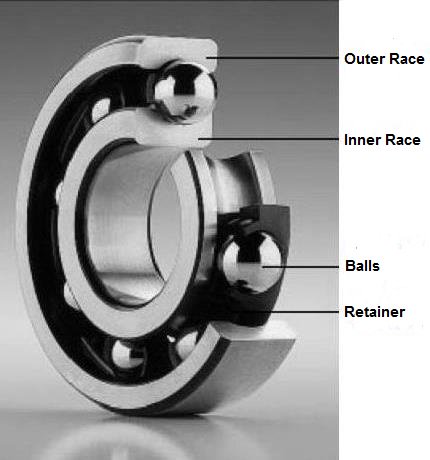News
How Ball Bearings are Manufactured
Rotary bearings, whether they are ball, roller, plain or needle bearings, are used in almost any application involving rotary motion, such as automobile wheels, dentist drills, machine tool spindles, draw bridges, motors, pumps and thousands of other applications.

Ball bearings are rolling element bearings that use balls to separate the bearing races and provide smooth, low friction motion in rotary applications. Ball bearings are manufactured in hundreds of sizes, from the ultra-small 1.50 mm diameter bearing for use with miniaturized medical devices and micro-motors, to bearings over 15 feet in diameter for use in heavy equipment.
How are ball bearings made, and how do they get the balls so round? The answer is a multi-step manufacturing process involving machining, heat treating, grinding, honing, lapping and assembly. Although there may be variations, the following process applies to the vast majority of standard ball bearings produced today.
Ball bearings are comprised of two bearing rings (or races), balls and (depending on the type) a retainer to maintain ball separation. Additional components such as seals and shields may be present as well, but this article will focus on the main bearing components of rings, balls and retainer.
Materials
The vast majority of bearings are manufactured from chrome steel, but many materials are used to maximize bearing performance and life.
The most common material used for bearing races is SAE 52100 steel. SAE 52100 is a chrome steel (1% carbon, 1.5% chrome alloy) and is dimensionally stable to 250 degrees F or greater, depending on the heat treatment process. SAE 52100 also has excellent elasticity, machinability and uniformity properties. Another popular material is AISI 440C stainless steel, used because of its anti-corrosive properties. AISI 440C is more expensive to machine than 52100 and cannot take as large a load. At 70 degrees F, 440C has 85% of the load capacity of 52100. Other martensitic stainless steels are used as well to reduce bearing noise or increase fatigue life. AISI M50 steel is used in critical life support system applications, such as the aircraft industry. M50 is twice as reliable as 52100 and contains 4% molybdenum to increase strength. The major tradeoff is cost, as M50 is approximately ten times as expensive as 52100.
Bearing balls are also most commonly manufactured from AISI 52100 steel. Other bearing ball materials include AISI 440C stainless, as well as other stainless materials, ceramic, glass and even plastic.Bearing retainers, also referred to as cages or separators, are manufactured from a variety of materials, including stamped steel, stamped brass, machined steel, machined bronze, molded nylon or Acetal (POM), and phenolic.
Categories
Latest News
- Types of Ceramic Bearings2020-02-29
- Straight Roller Bearings2020-02-29
- Ball Bearings2020-01-11
- Life ratings for ball and roller bearings2019-12-21
- Roller Bearings vs. Ball Bearings - What's the Difference?2019-12-21
Contact
Contact: Mr.Robin
Phone: +86 15253131888
Email: sales@sdjrcd.com
Add:No.7 Shuanghe Street, Wenchang Sub-district Office, Changqing District,Jinan City, Shandong Province,China.
 PEK
PEK